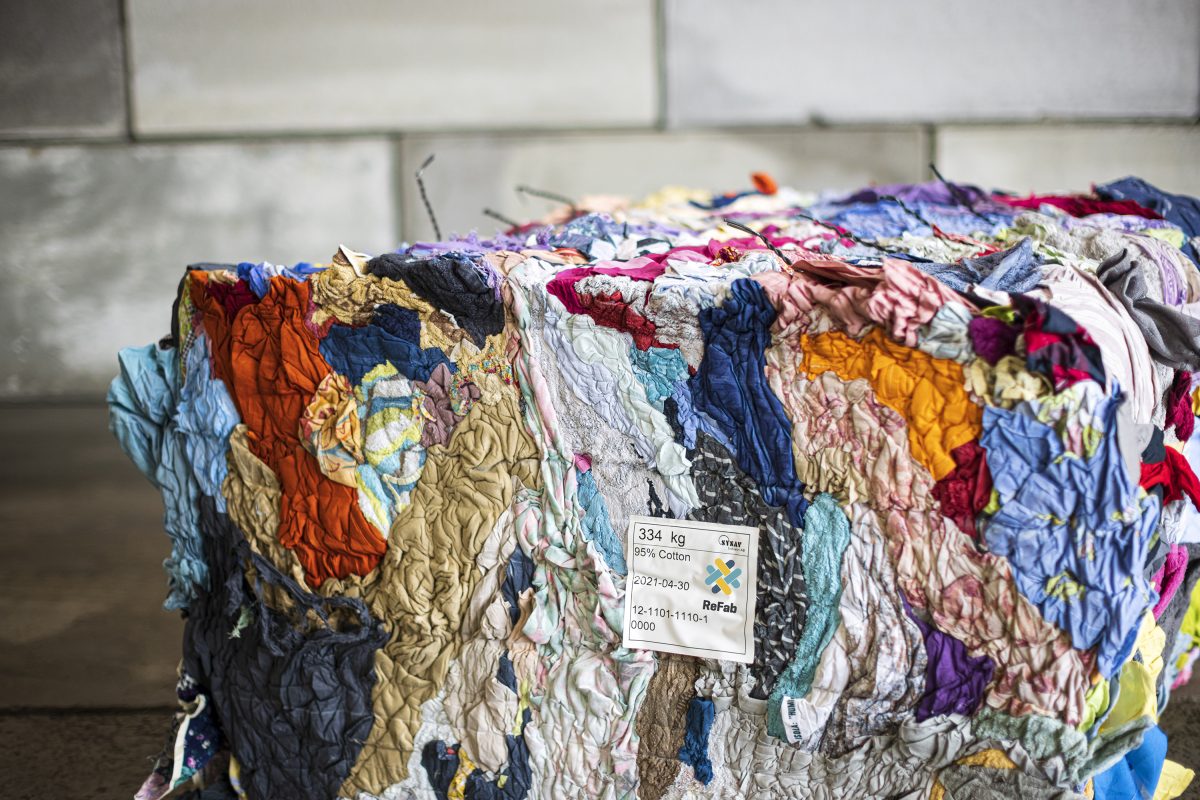
Särmäkari’s professional background is in fashion design. However, she’s always been more fascinated with other designers’ works than her own.
— So, I decided to switch to fashion studies and design research. I’m now finalizing my doctoral thesis about fashion designers’ authorship and professionalism in contemporary technological environments — also known as ’digital fashion’ and ’fashion 4.0’.
You’ve previously also presented a master’s thesis exploring ’Open Source Fashion’. Can you tell us more about it and what you explored?
— I started working on topics related to digital fashion during my MA thesis project more than a decade ago. I was investigating ’open-source fashion’ as an alternative paradigm of fashion where design is shared with users and amateurs. Inspired by the work of Swedish researcher Otto von Busch, it was a futures studies project using the Delphi method with a goal of exploring the potential and probabilities of participatory fashion practices and understanding what could open-source fashion be. I was interested in this approach due to the anxiety I was experiencing towards the fashion industry, based on bulk production of high volumes of clothes, designers guessing — or relying on trend reports — what people might like in a year or two, and companies trying to push the clothes that no one needs to consumers through marketing in order to keep inventory as small as possible. The inventory part was maybe the most appalling: the resources spent to produce piles of garments that no one even buys or wears. I felt that we have to think of a system where the demand and supply are in better balance, people can directly influence what is produced and new technologies are used for on-demand production. Having a design background and being a true novice in research, the MA thesis could have been written better, and the initial thoughts were too idealistic. However, it did hold seeds for further research and was the starting point for my PhD research project which I embarked in 2017, says Särmäkari.
Yes, so tell us about this current research.
— It focuses on digital fashion, or more precisely, on how the fashion designers’ profession, field, culture, authorship, and work are affected by rapidly evolving digitalization. The modern notion of authorship has always played an important role in the professionalization of fashion design — since the emergence of the first fashion designers in the 19th century and later in conceptual approaches to fashion design. With the rise of digital culture, there has been a lot of critical discussion on authorship, its complexity and plural forms as well as deprofessionalization of fields such as journalism and design. I was interested in looking at what’s happening to fashion designers, which players are using subversive strategies to challenge the conventions of the fashion design profession and how and why they are doing that. I felt that there has long been a professional crisis, designers searching for new terrains. Not only did tools and materials ought to be updated but the whole fashion culture was looking for a different mindset.
”I argue that the new (sub)field of digital fashion re-professionalizes fashion design”
How have you worked with the research? And what have you come up with?
— I have been studying particular cases closely and doing qualitative multiple-case study research. Most of my data was collected between 2018 and 2021, offering a glimpse into that moment in fashion history. My cases are four pioneering, technologically advanced fashion design practices where the creation happens in virtual spaces and is shared with non-professionals, networks, or machines. These cases are The Fabricant (Amsterdam), Atacac (Gothenburg), Matti Liimatainen / Self-Assembly (Helsinki), and Minuju (Helsinki). My research process included ethnographic methods, meaning that I have visited their studios, observed what they are doing and how they are working and interviewed the designers and others in the companies. I have also been collecting all the material I could find on the cases: their talks, interviews, website and social media content, streaming sessions, work plans, and so on. I have identified and framed several phenomena typical for the current fashion 4.0 context. Fashion 4.0 stands for fashion practices in Industry 4.0, characterized by smart technologies and cyber-physical systems. The key phenomena are open-source fashion, digital 3D fashion, and algorithmic fashion, which were also the topics of the peer-reviewed publications that comprise my article-based PhD thesis, says Särmäkari. She continues:
— I argue that the new (sub)field of digital fashion re-professionalizes fashion design by building a new fashion design culture that draws from open-source philosophy and posthuman discourse. It intellectualizes fashion practice, amplifies employment possibilities and enables entry into other fields, including gaming and technology. The figure of a ’fashion 4.0 designer’ differs from the ideals of the autonomous designer and instead highlights the role of a community player and flexible ’metathinker’ whose skills are adjustable to different projects, collaborators and co-creators. Digital fashion also raises critical questions regarding the art of fashion, the power of algorithms and the technology field and the further precarity of designers. I also argue that the fleshiness of fashion design is at the core of digital fashion practices where digital technologies are design companions as well as ledgers of designers’ tacit knowledge, sites and materials. Fashion 4.0 designers are in constant fluidity between digital technologies, human networks and physical realities.

You started your research around five years ago, has it changed in any way given the huge boom we now experience for digital fashion?
— I was first interested in authorship aspects and how some designers question the traditional notion of authorship, where the genius — often male — designer is usually seen as an artist and the sole creator behind works. To explore contemporary questions of authorship, I was looking into AI-aided fashion projects, mostly led by computer scientists, and rather niche mass-customization projects. Through these angles, I got interested in Atacac which I was lucky to visit and study in the spring of 2019. There I learned about the possibilities of digital fashion and was utterly mind-blown. The co-founder and designer Rickard Lindqvist envisioned how virtual clothes, free from the creative limitations of commercial physical clothes, could become the bags and perfumes of luxury companies, making huge profits in games and VR platforms but also giving professional designers and amateurs a lot of creative space. Looking at the NFT boom of today, I think Rickard was quite right! I also learned from people at Atacac about other digital fashion practitioners, including The Fabricant, Digi-GXL, and Studio PMS who were all early vanguards in the field that has since become more mainstream. I visited Atacac a few months before The Fabricant auctioned their famous Iridescence-dress for $9500 in cryptocurrency — the first NFT and a pilot showing how blockchain and fashion companies could collaborate. I think that this event was a turning point in the phenomenon of digital fashion because it gained so much media attention, having journalists asking why we would pay for clothes that do not exist. I contacted The Fabricant, and they allowed me to come to their studio and study their work despite the increasing hype. Maybe one of the reasons to let me in was the founder and CEO, Kerry Murphy’s, Finnish roots. Back then, The Fabricant was still working on its proof of concept, convincing the suspicious fashion companies and having a revolutionary attitude. Today, they have become important players in the fashion industry and leaders in the world of digital-only blockchain fashion, raising astronomical investments. During my research process, my focus has switched to the phenomenon of digital fashion that in itself holds a strong open-source philosophy, emphasizing the community, spreading knowledge and inviting to build on their works, and a posthuman approach through intimate entanglement with 3D technology and experimentation with algorithmic design methods, Särmäkari explains.

When finished, how do you hope that your research will be used? And will you continue with it onwards as well?
— I hope that it will serve other researchers in further studies on digital fashion and the fashion design profession. There are many areas to build on — for instance, the inclusivity questions that are important to digital fashion designers, such as the founders of the Institute of Digital Fashion (IoDF) and Digi GXL. Moreover, the educational aspects have to be developed further so that the fashion schools will keep up with the fast pace of technological skills’ expectations in the field. Some schools have already integrated digital 3D fashion design courses into their curricula. There are not many job ads that are looking for fashion designers but a lot looking for fashion designers who master 3D software. Another area to study more closely is the ’fashionization’ of games and gamification of fashion as well as how the fashion field will unfold further in the metaverse and all the risks and downsides that the increasing datafication and tech-oriented fashion worlds might bring along. The field of digital fashion moves forward every day, and there are endless questions to be addressed.
”We are planning to build a digital fashion museum to provide a platform for contemporary Finnish fashion”
Except for your research, what else do you have coming?
— I have been working in a national research consortium called IDA — Intimacy in Data-Driven Culture — in a project that critically focuses on creative work in a digitized society. Led by my supervisor Annamari Vänskä, our project has been investigating the work of influencers, game developers, fashion designers, and the designers of wearable technologies. Our research has already expanded to other outcomes than academia. We had a big fashion exhibition, Intimacy, at the Design Museum in Helsinki, which I curated together with professor Annamari Vänskä and post-doctoral researcher Jenni Hokka. It focused on contemporary fashion in Finland, featuring 40 designers and companies, and was the main exhibition in the Design Museum, open for half a year and attracted a huge amount of very different visitors. Two of my case studies — The Fabricant and Self-Assembly — were part of this exhibition, together with the phenomena of digital and algorithmic fashion that they represent. We also wrote a peer-reviewed book on the same topics. The book is for the academic, professional, and lay public alike and works as a rich source of knowledge but also as a coffee table book. It’s in Finnish, but we will also publish it in English later this year. After I will finish my PhD, I’m planning to continue working with digital fashion yet from a bit different angle. We are planning to build a digital fashion museum to provide a platform for contemporary Finnish fashion and at the same time to archive and preserve the cultural heritage. We don’t have a fashion museum in Finland, and fashion collections are mainly preserved by the designers themselves. In this journey of taking museums to the metaverse, we want to try out digital 3D tools for digitization — and I might even learn to use them myself.
— My overall goal is to consolidate the appreciation of fashion as a cultural and academic field in Finland and beyond. Fashion is a philosophy in applied and embodied form that not only reflects the zeitgeist but also holds an active capacity to affect the surroundings, cultures, and societies, Särmäkari concludes.





